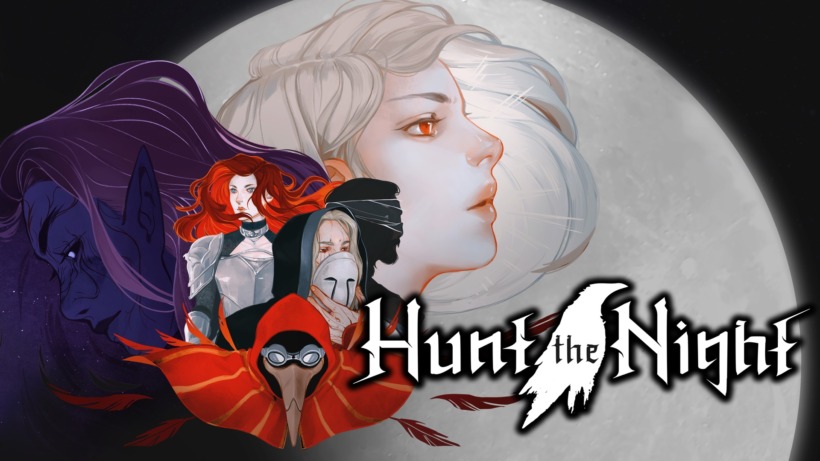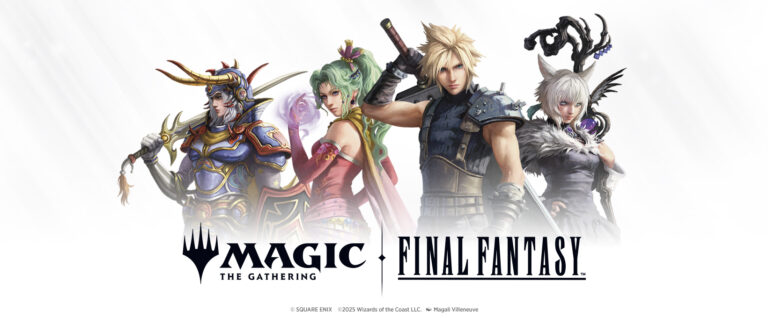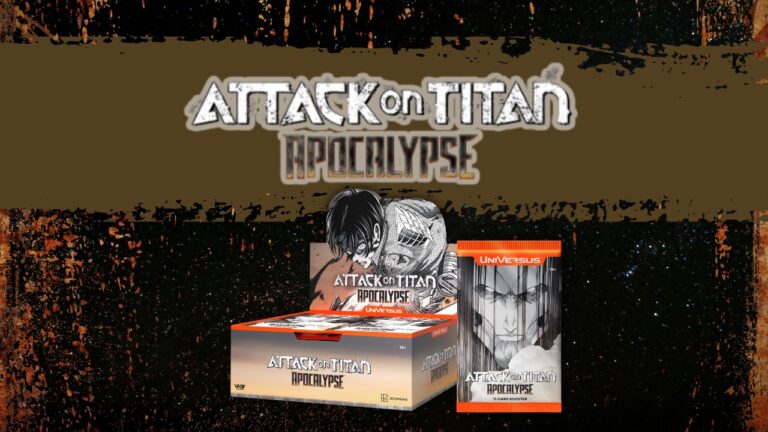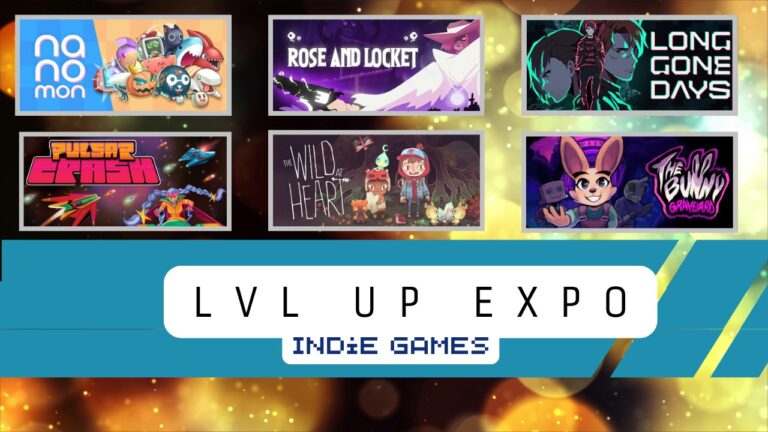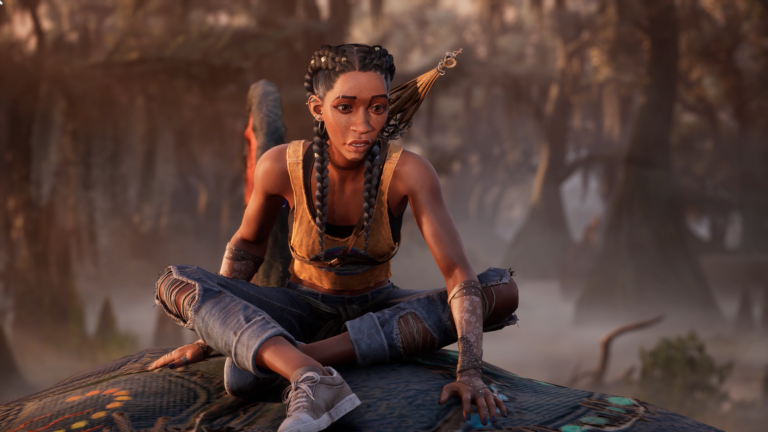Hunt the Night is what you get when you blend together Hades, Castlevania, and Diablo, lightly sprinkle some Resident Evil over it, bottle it up and package it in a bloody Soulslike-shaped box, and beautifully top it off with a ribbon made of The Legend of Zelda. All that to say, Hunt the Night is a brilliant, brutally difficult independent adventure from Spanish developer Moonlight Games and publisher DANGEN Entertainment. Read on for our Hunt the Night review!
Potential spoilers ahead.
When Hunt the Night was first revealed in 2021, I was immediately enamored by its gorgeous top-down 16-bit pixel art and haunting gothic horror aesthetic. Reminiscent of SNES-era titles that I’m fond of, this game expertly mixes the best parts of these retro-style games with modern combat and exploration. Tight, snappy gameplay, role-playing elements, limitless character build variety, insanely difficult boss battles, and a macabre soundtrack are what make Hunt the Night a no-brainer for veteran fans of the Soulslike genre and newcomers alike.
Taking Back the Night
In Hunt the Night, you play as Vesper Blackbone, a member of a group of human monster hunters called the Stalkers, who protect humanity from the evils that plague the everlasting Night. In time, they discover the Seal of Night, an artifact that protects them from these horrors. But the Seal shatters, and Vesper must traverse the world of Medhram in search of the five shards of the Seal to end the nightmare forever.
The story in Hunt the Night, while intriguing, really takes a backseat to its gameplay, which we’ll get to. The writing and characters are deep enough to ensure the player cares, but sometimes I became a bit lost and confused about what’s happening around me. Luckily, scattered throughout the game world are crow feathers, which offer some history into the events prior to the start of the game, and provide narrative exposition similar to Bioshock‘s audio diaries (although with no voiceover; you read them). You can speak to other NPCs at Ravensford, the game’s main hub area, to get more information on the goings-on in the world, and even get hints about where to go if you’re stuck by talking to Brielle Spiegel, who can be found in the throne room housing the Seal shards.
There are also side quests and optional explorable locations spread around the overworld, which help with world-building and add to the overarching sense of dread (and sometimes pretty sweet gear). A good example of this is when Vesper stumbles upon a doomed bridal party that saw an entire household turn into freaky plant-zombie hybrids.

Exploring the Overworld
The world of Medhram is made up of a handful of different biomes, such as a poison swamp ironically titled the Golden Meadows or the underground labyrinth called the Bowels of the Earth, that Vesper must explore to uncover the Seal shards. Traversal is relatively easy, as you can fast travel between discovered Crow Shrines, Hunt the Night‘s save points. Crow Shrines restore your health, healing items, grenades and bullets after each use, and can be used as many times as you like. Of note, however, is the game’s lack of a map, which honestly was a bit of a headache, and I became disoriented often during the game’s earlier hours.
Much of the game’s gear and weapons can be missed, so it’s important to explore every slimy nook and bloody cranny that the world has to offer. For example, you can get a very useful shotgun within the game’s first hour, but if you don’t backtrack, you lose out on it permanently. The game rewards exploration, and I highly recommend you do so. Hunt the Night‘s exploration gets a bit more layered when you unlock Umbra, Vesper’s shadowy counterpart that she can project outward to help solve puzzles or cross poison water.
Vesper’s guns are taken into account when traversing, as well. You’ll come across red floating eyeballs that, once shot, dissolve into a walkable platform that takes its eyeball shape again after a short time.
Another aspect I don’t appreciate about Hunt the Night is the lack of a sort of bestiary or enemy log, as there are is a quest that requires you to slay four of a specific enemy and only give their name, with no description of appearance or any other discerning features. A feature like this should be included, showing HP and money drop amounts, for example.
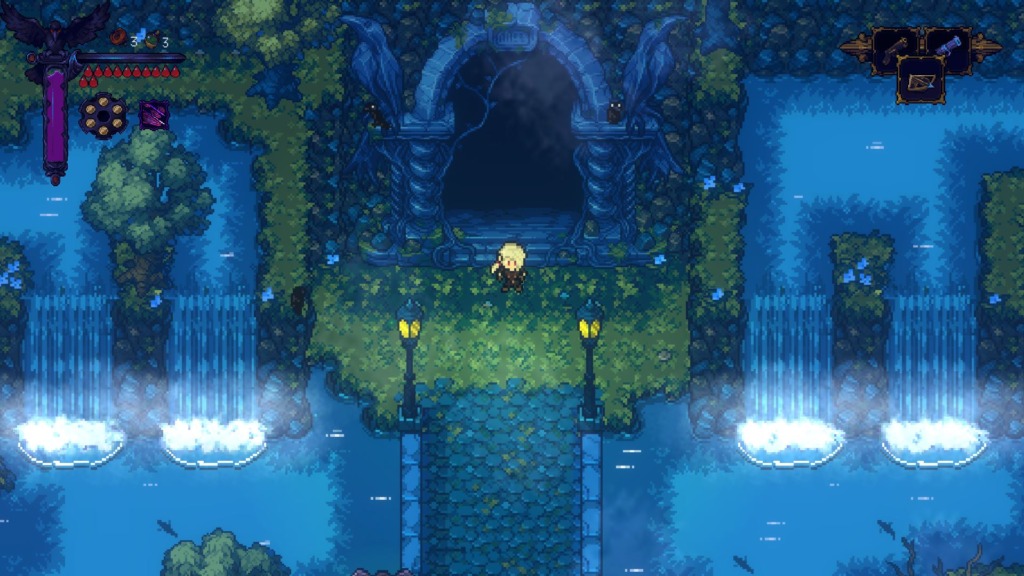
Fighting For Your Life
Die-hard Soulslike fans already know, but for those new to the genre, combat in these games have a steep learning curve. In a nutshell, it’s best to be patient, learn the enemy’s movements, timing, and attack patterns. It’s just as important to dodge and formulate a plan of attack as it is to deal damage. Don’t feel discouraged; you will die. And while there is no real penalty for death such as losing gear or currency, you will be sent back either a few screens or to your last Crow Shrine. This can get tedious, as it’s tough to predict which area you’ll be sent back to; the game doesn’t have any sort of obvious auto-save function.
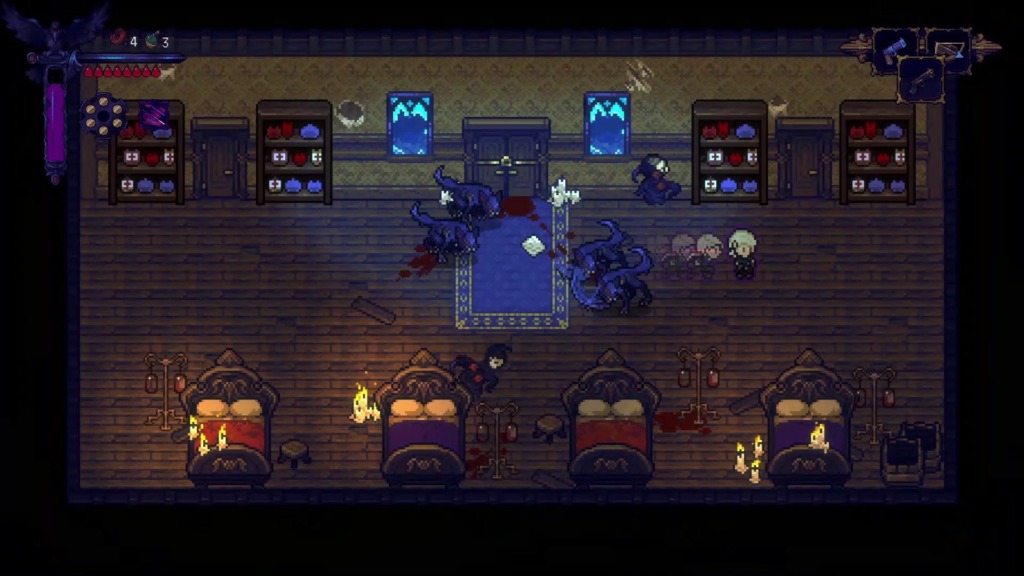
Vesper’s arsenal includes a melee weapon, a firearm, a grenade, and a special attack. It wouldn’t be a Soulslike without a dodge mechanic, and Vesper does her best Alucard impression here, but sadly there is no parrying in Hunt the Night. A variety of special attacks called Dark Powers are also at your disposable (if you discover them, of course), such as a powerful AOE move, and they all have a cooldown ranging from twelve seconds to fifty. You can choose from a variety of melee weapon styles, such as twin daggers or two-handed greatswords, each with their own pros and cons; the daggers are quick and deal less damage, whereas the greatsword swings slow but packs a punch. Guns, however, can be cycled in real-time between the handgun, shotgun, and crossbow using the shoulder buttons, and bullets are restored one-by-one for every three melee hits you land. There is no wrong way to tackle combat, just preference and playstyle. Be warned; you can’t open the menu to change gear in combat, so go into each encounter and boss fight sufficiently prepared.
While even a regular enemy’s attack can take a hefty chunk from Vesper’s life, she’s able to recover health by using roses. Be careful, because there’s only a finite amount and must be restored at a Crow Shrine.
Like any Soulslike, Hunt the Night‘s boss battles are its bread and butter. Each boss has their own attack patterns and strategies associated with them, and as such, certain weapons are better than others depending on which big bad you’re facing. Most enemies have a tell, like a pulse or specific movement, before attacking, giving away when you should dodge or move in for the kill.
Combat can definitely be frustrating, and that’s to be expected, but there are certain quality of life features I’d like to see added after the game’s release, such as being able to destroy incoming enemy projectiles with a swipe of my sword. Sure, they can be dodged, but sometimes the timing doesn’t line up and attacking them would work better.
Note: I played the game on Steam using a PS4 controller, and I highly recommend others do the same. Mouse and keyboard will make playing this game a nightmare.
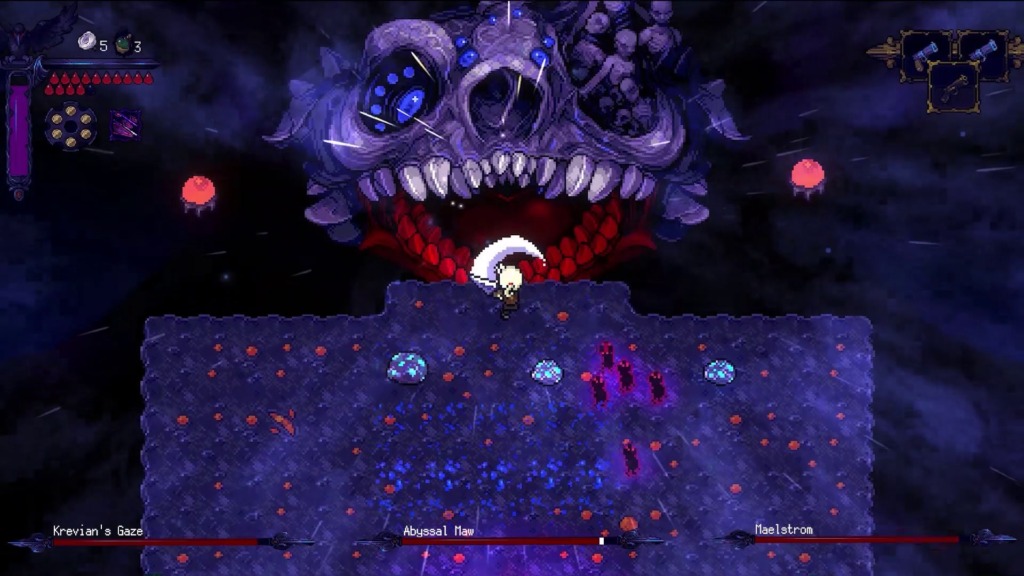
Outfit Your Arsenal, Hunt the Night
What good are your weapons if you can’t make them just a little better? Melee weapons and armor can be found scattered around in chests or occasionally looted off a dead body. These range in strength and ability, such as a spear that does poison damage, or a sword that absorbs health after each hit. You’ll also come across accessories called Moonstones that augment Vesper’s abilities even further, such as increasing her health or + 10% poison damage. Guns, however, are handled differently. They can be upgraded in Ravensford by spending Noctilium (Hunt the Night‘s currency, found in chests or earned by defeating enemies) at a vendor, unlocking different tiers of abilities for each firearm. Additionally, Vesper can find and equip armor that gives her a buff like burn nullification. The customization is simple enough to not overwhelm the player, but deep enough to offer a wide variety of options. The world is your oyster; tinker and experiment with builds and find what works best for you.
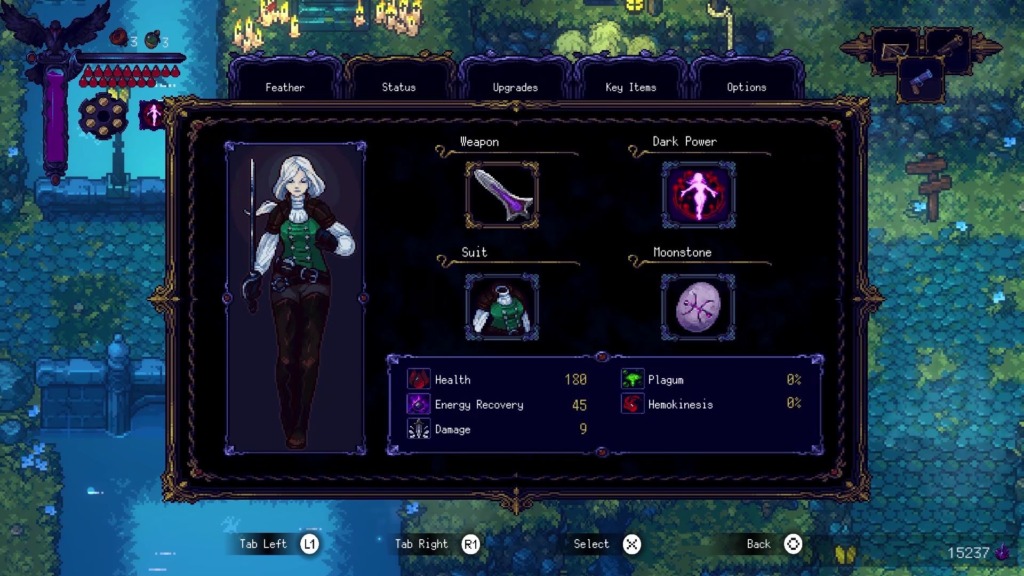
“Hunt the Night” isn’t just a catchy title: you can actually go out and hunt the night. In the Ravensford tavern, you can pay for bounties on unique enemies hidden around the world that, upon defeating them, give you a handsome amount of Noctilium and a permanent health increase. These are relatively easy to find; on the map, it’ll be a floating, orange orb. Interact with it and you’ll be taken to the monsters battle arena.
While this is good side content, there is no log or other way to keep track of which bounties you’ve completed or not. I backtracked more than once to make sure I had defeated the monster in a specific area as the locations are confusing at times. Might be best to take notes if you plan to hunt them all down.
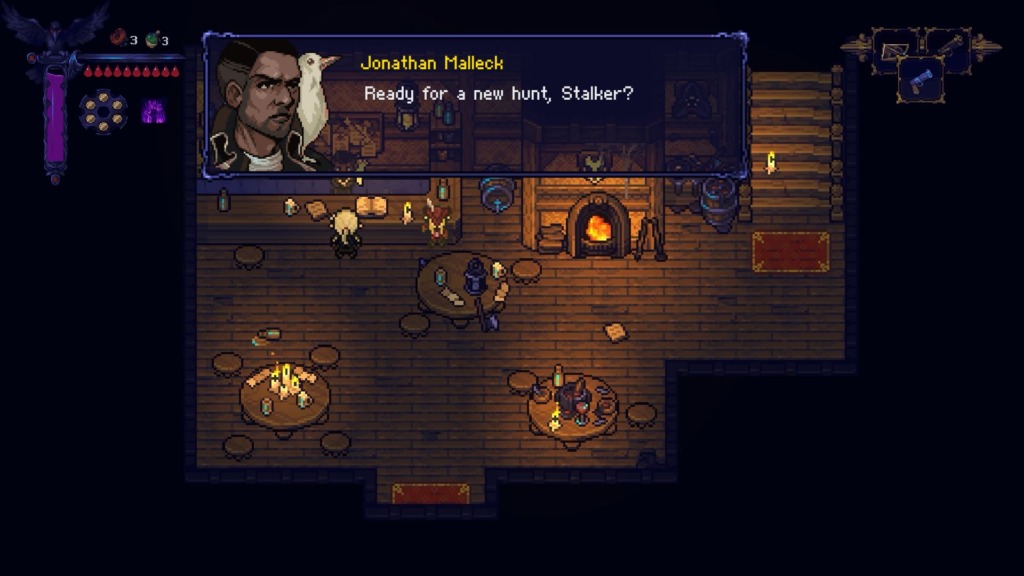
Verdict
Hunt the Night is an exciting amalgamation of genres that promises to deliver a fulfilling experience to those patient enough to overcome the steep learning curve and brutally difficult battles. Sporting a non-intrusive UI, a masterful 2D pixel art style and an ambient gothic horror-inspired soundtrack, this game caters well to both retro fans and modern gamers. With some quality of life improvements and nurturing over time, Hunt the Night has the potential to be a run-away independent hit.
Hunt the Night will be available April 13, 2023 on PC, with PlayStation, Xbox Series consoles, and Nintendo Switch release dates to come.
Reviewed on Steam. Code and images provided by Moonlight Games.
Check out Temple of Geek’s other game reviews!

